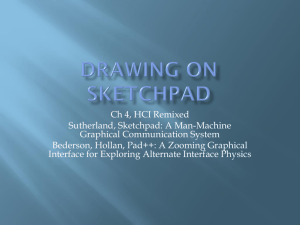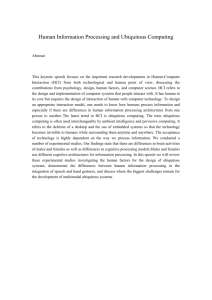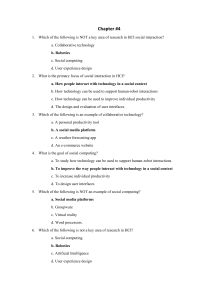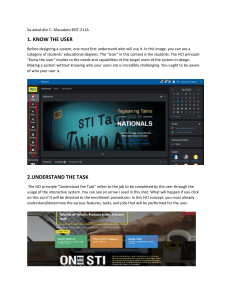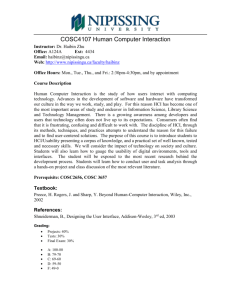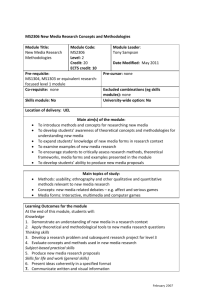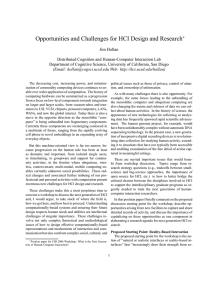Challenges and Opportunities for HCI Design and Research
advertisement
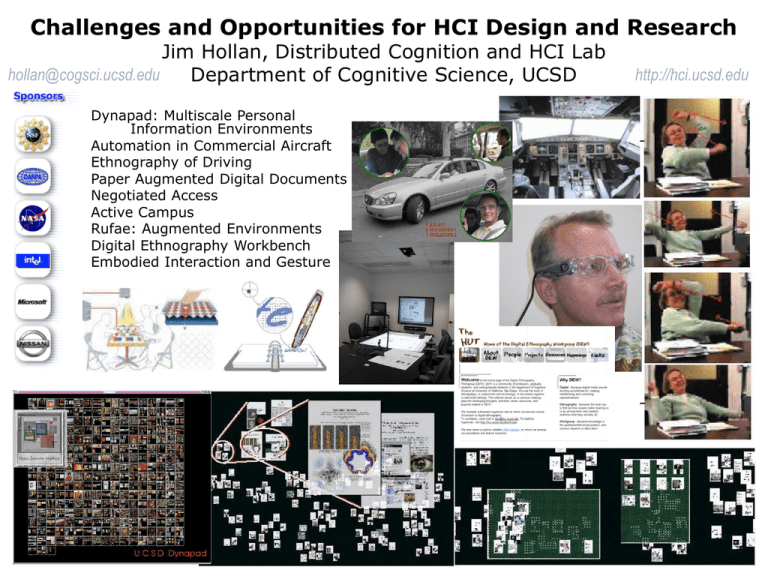
Challenges and Opportunities for HCI Design and Research Jim Hollan, Distributed Cognition and HCI Lab hollan@cogsci.ucsd.edu Department of Cognitive Science, UCSD Dynapad: Multiscale Personal Information Environments Automation in Commercial Aircraft Ethnography of Driving Paper Augmented Digital Documents Negotiated Access Active Campus Rufae: Augmented Environments Digital Ethnography Workbench Embodied Interaction and Gesture http://hci.ucsd.edu Challenges The miniaturization, increasing power, and decreasing cost of commodity computing devices makes possible wide-scale application and further imbuing of the world with computation • The monolithic "computer" is being unbundled into fragmentary components • These components, and the diverse applications they enable, are now reemerging coalesced in a multitude of rapidly evolving forms ranging from cell phones and other appliance-like devices to novel embeddings in an expanding array of everyday objects and in vast communication and sensor networks • Enormous New Challenges for HCI Design and Research involving not only complex theoretical and methodological issues of how to design effective computationally-based representations in increasing complex networked environments but also confront complex social, cultural, and political issues such as those of privacy, contol of attention, and ownership of information As with many challenges there are also opportunities • Changing view of cognition: from a property of isolated individuals to a property of larger social and technical systems • The boundary between the physical and digital is increasingly permeable and computation is becoming ubiquitous • Same forces leading to a ubiquitous computing future are also changing the nature and richness of data we can collect about human activities The ubiquity of computing and a new generation of inexpensive digital recording devices may revolutionize the study of human activity, extend it to situations that have not typically been accessible, and enable multiscale examination of the fine detail of action captured in meaningful settings. Need an open software infrastructure to support capture of rich activity data, speed and improve analysis, and facilitate sharing with the larger research community. • In the history of science, the appearance of new technologies for collecting or analyzing data frequently has spawned rapid scientific advancement Final Thought • HCI owes a deep intellectual debt to Parc and the development of the Alto. • Is it not time for one (or more) similarly ambitious projects? • Might not a major limitation in building a new generation of HCI be that we are building layers on top of systems designed with virtually no conception of the services needed today?
